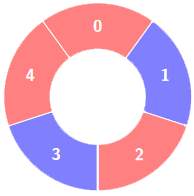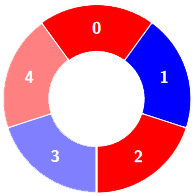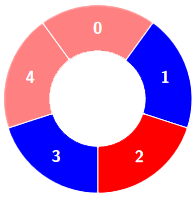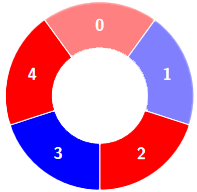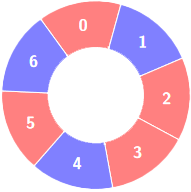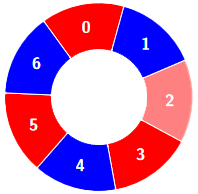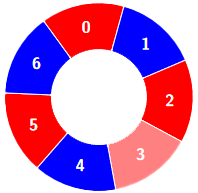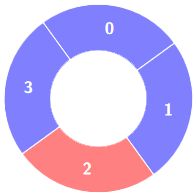3208. Alternating Groups II
Description
There is a circle of red and blue tiles. You are given an array of integers colors and an integer k. The color of tile i is represented by colors[i]:
colors[i] == 0means that tileiis red.colors[i] == 1means that tileiis blue.
An alternating group is every k contiguous tiles in the circle with alternating colors (each tile in the group except the first and last one has a different color from its left and right tiles).
Return the number of alternating groups.
Note that since colors represents a circle, the first and the last tiles are considered to be next to each other.
Example 1:
Example 2:
Example 3:
Constraints:
3 <= colors.length <= 1050 <= colors[i] <= 13 <= k <= colors.length
Solutions
Solution 1: Single Pass
We can unfold the ring into an array of length \(2n\) and then traverse this array from left to right. We use a variable \(\textit{cnt}\) to record the current length of the alternating group. If we encounter the same color, we reset \(\textit{cnt}\) to \(1\); otherwise, we increment \(\textit{cnt}\). If \(\textit{cnt} \ge k\) and the current position \(i\) is greater than or equal to \(n\), then we have found an alternating group, and we increment the answer by one.
After the traversal, we return the answer.
The time complexity is \(O(n)\), where \(n\) is the length of the array \(\textit{colors}\). The space complexity is \(O(1)\).
1 2 3 4 5 6 7 8 9 10 11 | |
1 2 3 4 5 6 7 8 9 10 11 12 13 14 15 | |
1 2 3 4 5 6 7 8 9 10 11 12 13 14 15 16 | |
1 2 3 4 5 6 7 8 9 10 11 12 13 14 15 | |
1 2 3 4 5 6 7 8 9 10 11 12 13 | |



